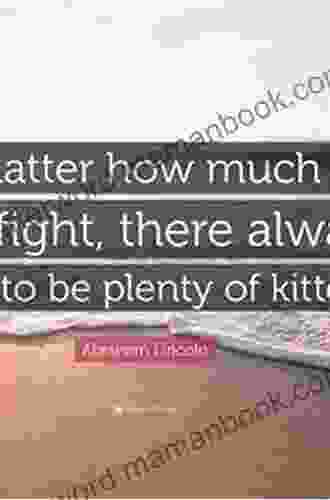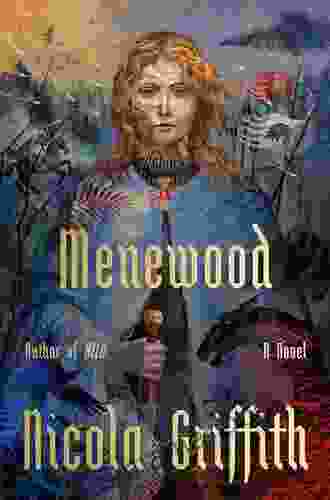The Makings Of The US Constitution United States Civics History 4th Grade Children S American History

The United States Constitution stands as a testament to the enduring principles of democracy and the rule of law. Its creation was a pivotal moment in American history, shaping the nation's destiny for centuries to come. This article delves into the fascinating story behind the drafting and adoption of the US Constitution, illuminating the challenges, debates, and compromises that forged this foundational document.
The Constitutional Convention
In May of 1787, delegates from 12 of the 13 states assembled in Philadelphia for what would become known as the Constitutional Convention. Their mission was to revise the Articles of Confederation, a weak and ineffective governing document that had failed to provide a strong central government.
Among the most prominent delegates were George Washington, James Madison, and Benjamin Franklin. These individuals brought a wealth of experience and wisdom to the convention, each playing a crucial role in shaping the final document.
4.4 out of 5
| Language | : | English |
| File size | : | 18774 KB |
| Screen Reader | : | Supported |
| Print length | : | 74 pages |
The Virginia Plan and the New Jersey Plan
Two primary proposals emerged during the early stages of the convention. The Virginia Plan, presented by James Madison, called for a strong national government with three branches: legislative, executive, and judicial. The New Jersey Plan, supported by smaller states, advocated for a unicameral legislature and a weaker central authority.
The Great Compromise
The Virginia Plan and the New Jersey Plan represented opposing visions for the new government. After much debate, a compromise was reached known as the Great Compromise. This agreement created a bicameral legislature (Congress) with a House of Representatives based on population and a Senate with equal representation for each state.
The Three-Fifths Compromise
Another contentious issue was the representation of enslaved people in the new government. The Three-Fifths Compromise resolved this matter by counting three-fifths of the enslaved population for both taxation and representation purposes. Although a flawed compromise, it allowed the Constitution to be adopted without the secession of Southern states.
Ratification and the Bill of Rights
The proposed Constitution required ratification by at least nine states before it could take effect. After a contentious ratification process, the Constitution was finally adopted on June 21, 1788.
However, many states demanded a Bill of Rights to protect individual freedoms from government encroachment. This led to the drafting and ratification of the first ten amendments to the Constitution, known collectively as the Bill of Rights, in 1791.
Key Concepts and Principles
The US Constitution embodies several fundamental principles that have shaped American society:
- Popular Sovereignty: The government derives its authority from the consent of the governed.
- Limited Government: The government has limited powers, as defined by the Constitution.
- Separation of Powers: The three branches of government (legislative, executive, judicial) have separate and distinct roles.
- Checks and Balances: Each branch of government has the ability to limit the power of the other branches.
- Federalism: Power is divided between the federal government and the states, with each level of government having its own responsibilities.
- Individual Rights: The Constitution protects the fundamental rights and freedoms of individuals, such as freedom of speech, religion, and the right to bear arms.
Legacy of the Constitution
The US Constitution has served as the bedrock of American democracy for over two centuries. It has provided a framework for government, protected individual rights, and fostered a spirit of unity and nationhood.
The Constitution remains a living document, subject to interpretation and amendment as society evolves. Its ability to adapt and endure is a testament to the foresight and wisdom of its framers.
The creation of the US Constitution was a remarkable achievement that laid the foundation for one of the world's longest-standing and successful democracies. The debates, compromises, and principles that shaped this document continue to guide the nation today, ensuring the enduring legacy of the American Constitution.
References
- The Creation of the US Constitution by Gordon S. Wood
- The Federalist Papers by James Madison, Alexander Hamilton, and John Jay
- American History: A Textbook by David M. Kennedy, Lizabeth Cohen, and Thomas A. Bailey
4.4 out of 5
| Language | : | English |
| File size | : | 18774 KB |
| Screen Reader | : | Supported |
| Print length | : | 74 pages |
Do you want to contribute by writing guest posts on this blog?
Please contact us and send us a resume of previous articles that you have written.
 Top Book
Top Book Novel
Novel Fiction
Fiction Nonfiction
Nonfiction Literature
Literature Paperback
Paperback Hardcover
Hardcover E-book
E-book Audiobook
Audiobook Bestseller
Bestseller Classic
Classic Mystery
Mystery Thriller
Thriller Romance
Romance Fantasy
Fantasy Science Fiction
Science Fiction Biography
Biography Memoir
Memoir Autobiography
Autobiography Poetry
Poetry Drama
Drama Historical Fiction
Historical Fiction Self-help
Self-help Young Adult
Young Adult Childrens Books
Childrens Books Graphic Novel
Graphic Novel Anthology
Anthology Series
Series Encyclopedia
Encyclopedia Reference
Reference Guidebook
Guidebook Textbook
Textbook Workbook
Workbook Journal
Journal Diary
Diary Manuscript
Manuscript Folio
Folio Pulp Fiction
Pulp Fiction Short Stories
Short Stories Fairy Tales
Fairy Tales Fables
Fables Mythology
Mythology Philosophy
Philosophy Religion
Religion Spirituality
Spirituality Essays
Essays Critique
Critique Commentary
Commentary Glossary
Glossary Bibliography
Bibliography Index
Index Table of Contents
Table of Contents Preface
Preface Introduction
Introduction Foreword
Foreword Afterword
Afterword Appendices
Appendices Annotations
Annotations Footnotes
Footnotes Epilogue
Epilogue Prologue
Prologue Lisa Shea
Lisa Shea David Boyne
David Boyne Stephanie Gray Connors
Stephanie Gray Connors Nancy L Silk
Nancy L Silk Franklin R Root
Franklin R Root David A White
David A White Tim Deforest
Tim Deforest Al Sharpton
Al Sharpton Will Duffy
Will Duffy J W Hagarty
J W Hagarty Jordan Taylor
Jordan Taylor L Q Murphy
L Q Murphy Brendan Burns
Brendan Burns John Grisham
John Grisham Jenna Herbut
Jenna Herbut C M Sutter
C M Sutter Orison Swett Marden
Orison Swett Marden Frank Rudnesky
Frank Rudnesky Irene Gleeson
Irene Gleeson Mulk Raj Anand
Mulk Raj Anand
Light bulbAdvertise smarter! Our strategic ad space ensures maximum exposure. Reserve your spot today!

 Jorge Luis BorgesAre They Too Hard On Them Na: A Comprehensive Examination of the Term and Its...
Jorge Luis BorgesAre They Too Hard On Them Na: A Comprehensive Examination of the Term and Its...
 Rick NelsonBlank Notebook: No Matter How Much Cats Fight, There Always Seem to Be Plenty...
Rick NelsonBlank Notebook: No Matter How Much Cats Fight, There Always Seem to Be Plenty...
 Steve CarterUnveiling the Secrets of Digital Marketing: Become a Digital Marketing Expert
Steve CarterUnveiling the Secrets of Digital Marketing: Become a Digital Marketing Expert Clark CampbellFollow ·4k
Clark CampbellFollow ·4k Cruz SimmonsFollow ·3.9k
Cruz SimmonsFollow ·3.9k Neal WardFollow ·3.2k
Neal WardFollow ·3.2k George HayesFollow ·18.9k
George HayesFollow ·18.9k Jerome BlairFollow ·3.7k
Jerome BlairFollow ·3.7k Trevor BellFollow ·13k
Trevor BellFollow ·13k Charles ReedFollow ·18.5k
Charles ReedFollow ·18.5k Geoffrey BlairFollow ·11.8k
Geoffrey BlairFollow ·11.8k

 Bryce Foster
Bryce FosterViolin Is Easy: A Comprehensive Guide for Beginners
The violin is a...

 Cristian Cox
Cristian CoxThe True Story Of The Ivy League Cowboys Who Raided The...
In the early 2000s, a group of Ivy League...

 Ken Follett
Ken FollettUnraveling the Enchanting World of Menewood: A...
Embark on an enthralling...

 Phil Foster
Phil FosterNorth Poems by Seamus Heaney: An Exploration of Place,...
Seamus Heaney's North...

 Jack Butler
Jack ButlerFleeting Encounters: The Enigmatic Transience of Maria...
In the annals of literary history, fleeting...

 Eliot Foster
Eliot FosterA Haiku Summer: Capturing the Essence of the Season in...
Summer is a time of warmth,...
4.4 out of 5
| Language | : | English |
| File size | : | 18774 KB |
| Screen Reader | : | Supported |
| Print length | : | 74 pages |






